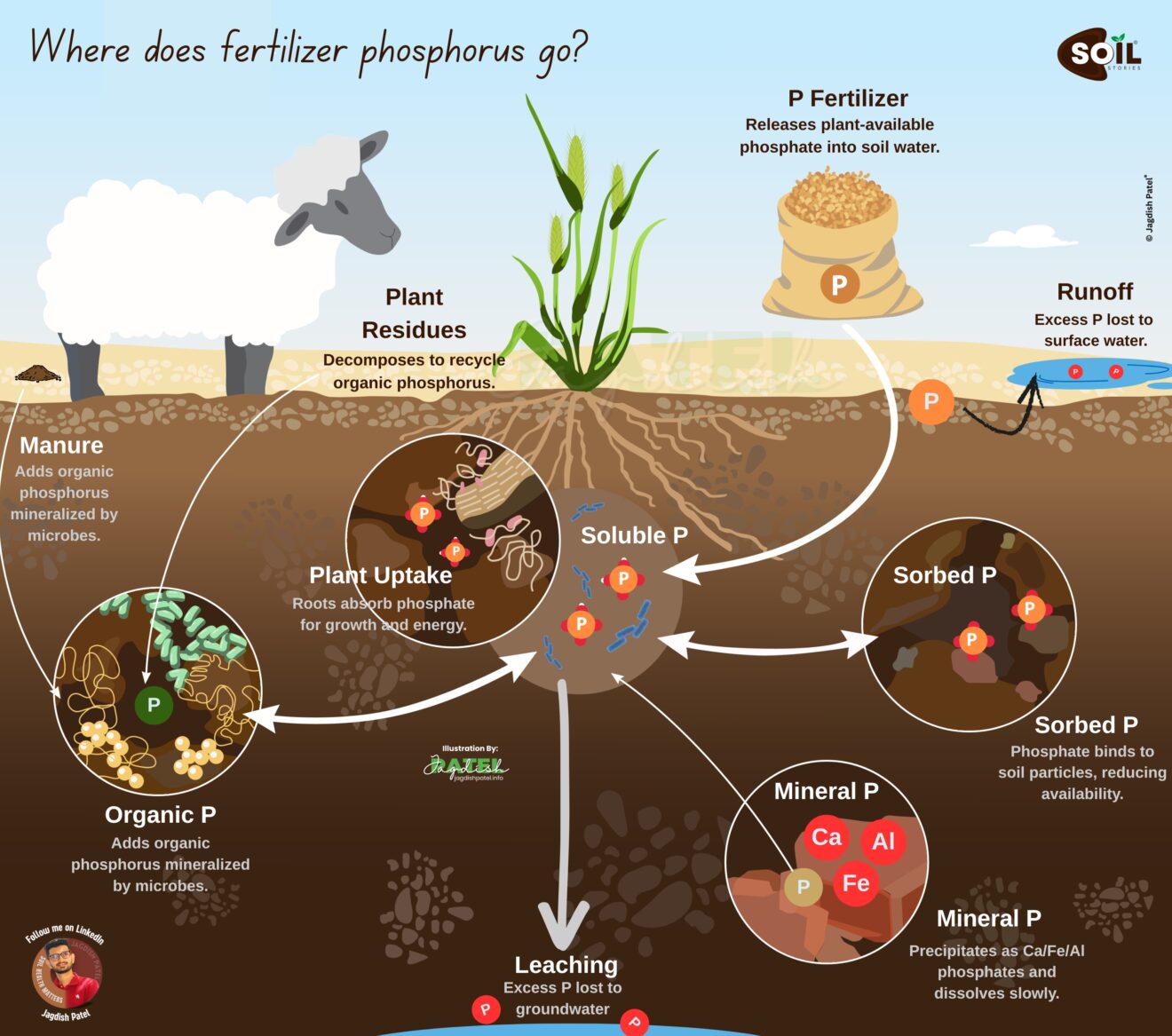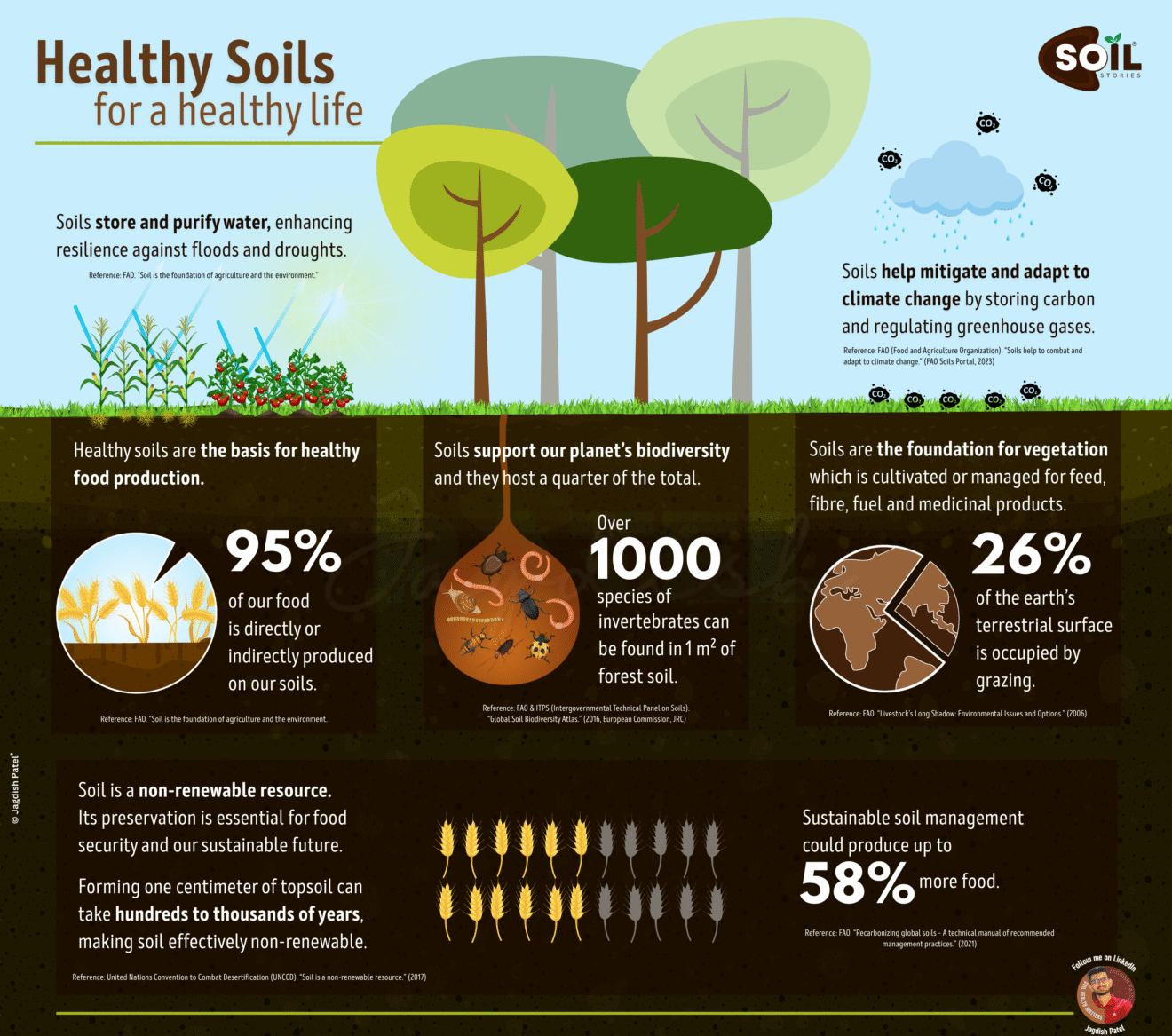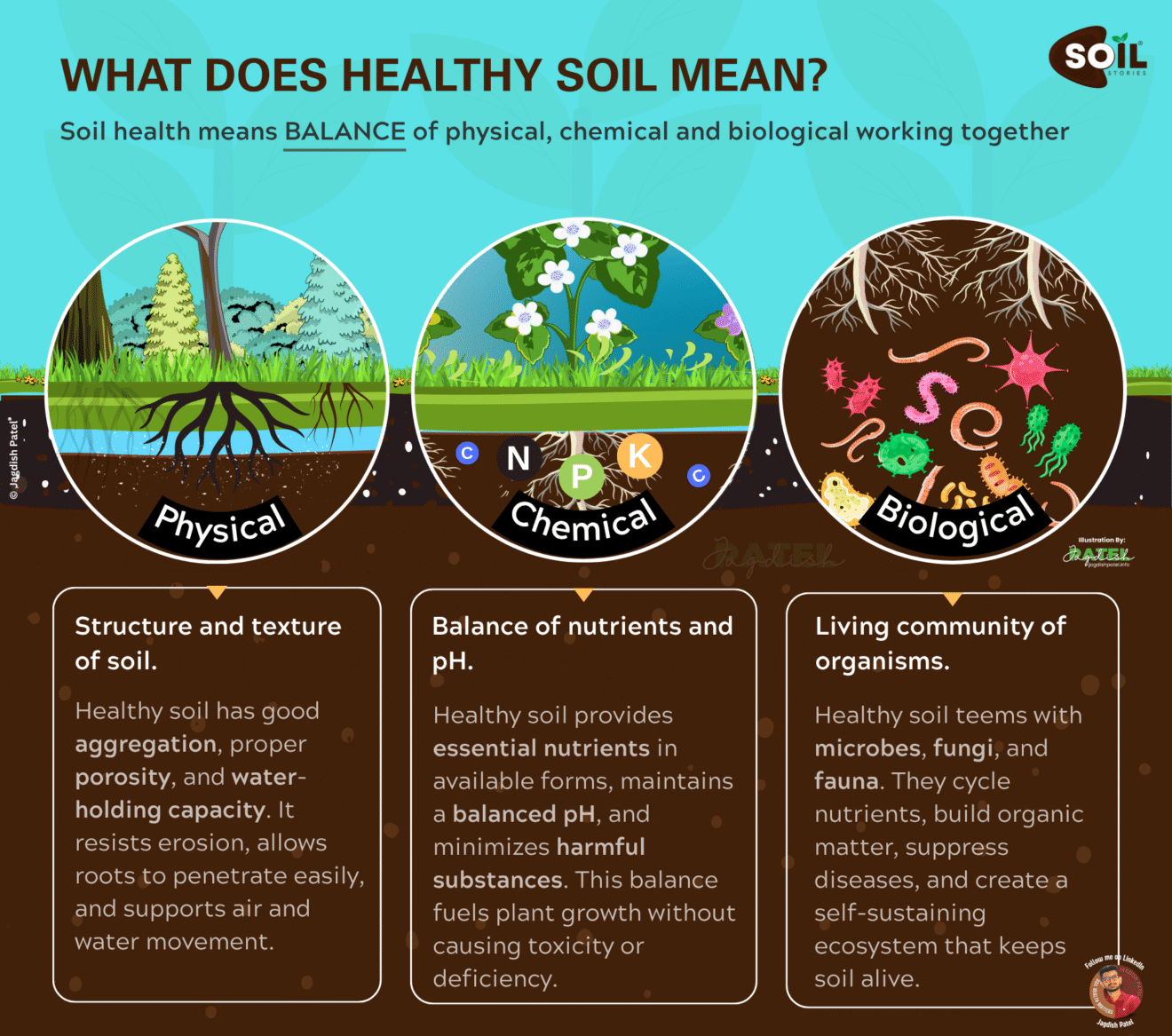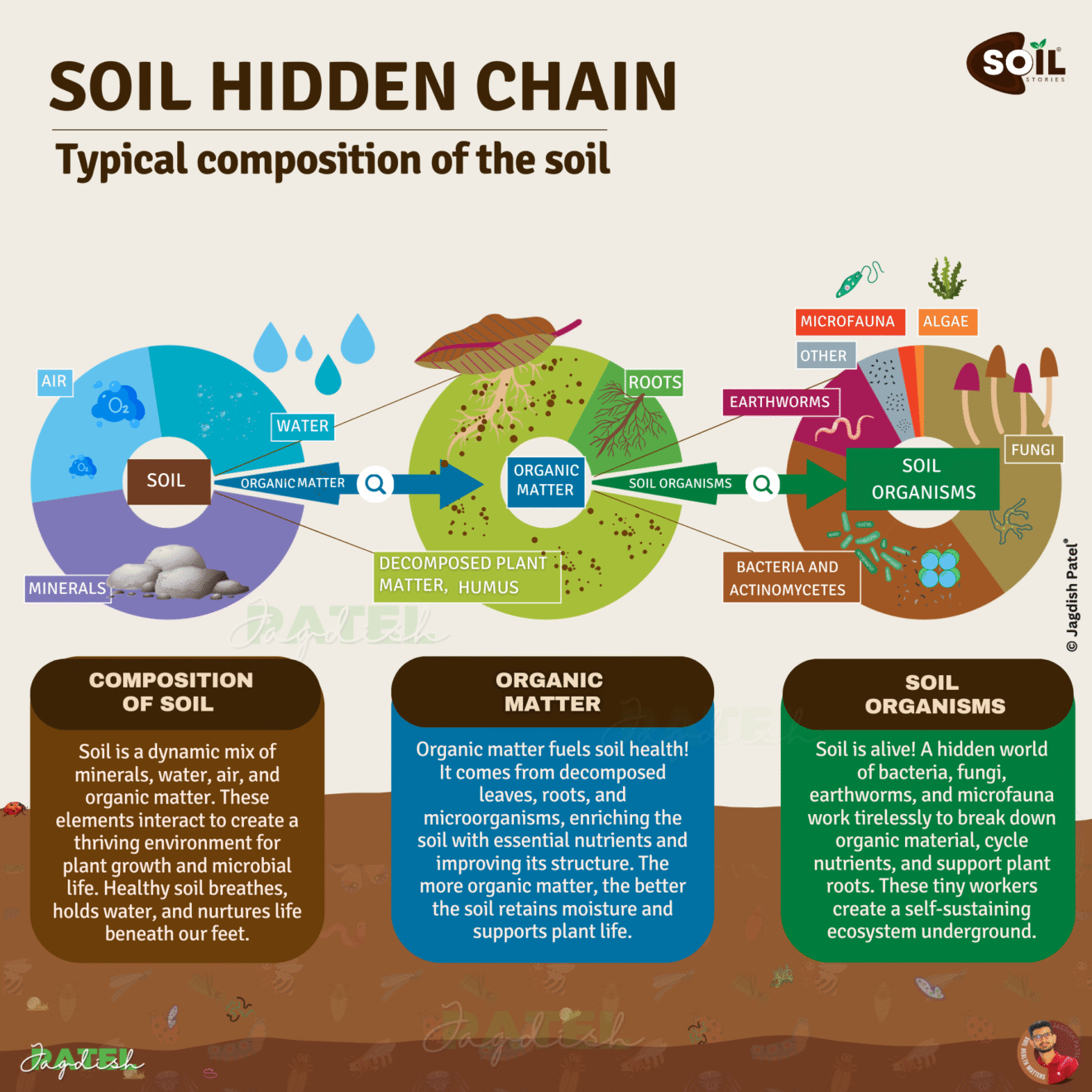Soil memory is a powerful concept that connects soil health, biological resilience, and long-term productivity. It refers to how soils retain the influence of past practices, such as tillage, crop rotation, drought, and fertilizer use, and how these factors shape the soil’s ability to support life. Understanding how soil loses its memory can help farmers, agronomists, and land managers make informed decisions that restore soil function and build regenerative systems.
Drawing from my experience as both a soil scientist and a visual communicator, this article aims to uncover the often-overlooked biological processes beneath our feet and raise awareness about the long-term impacts of how we manage the land. While soil does not possess memory in the cognitive sense, it does exhibit legacy effects the imprints of previous crops, management decisions, and environmental conditions. This article explores the metaphor of “soil memory” and how it is being erased by repeated tillage, chemical dependency, and climate stressors, particularly drought. More importantly, it outlines how this loss can be reversed through biological, regenerative, and holistic approaches.
What Do We Mean by Soil Memory?
In practical terms, soil memory refers to the lasting impact of past biological interactions and land management choices. It manifests in the way microbial communities are structured, in the composition of organic matter, and in the resilience or fragility of soil functions.
Over time, these memory-like qualities help soil respond better to crops and environmental shifts. However, this capacity can be weakened or lost depending on how the land is treated. And when degraded, it causes the soil to forget how to do what it once did naturally: hold water, buffer nutrients, resist pathogens, and support plant vitality.
The Science Behind the Metaphor
To illustrate, consider the following field example from the U.S. Corn Belt that demonstrates how repeated management decisions shape soil memory over time:
| Parameter | Description |
|---|---|
| Location | Western Iowa, USA (silt loam, formerly prairie soil) |
| Crop History | Continuous corn monoculture for 8 years |
| Recent Soil Test | Organic Carbon: 1.1% (declining) Available Nitrogen: 190 kg/ha Phosphorus: 8 ppm (low) pH: 6.7 CEC: 14.5 meq/100g |
| Current Issues | Compaction at 10–15 cm, reduced mycorrhizal colonization, higher fertilizer requirement for same yield |
| Biological Snapshot | Bacterial diversity declining, fungal biomass below regional average, minimal earthworm presence |
| Legacy Effect | Past tillage and synthetic input use disrupted microbial continuity; soil has lost memory of symbiotic partnerships |
| Suggested Interventions | Introduce cereal rye cover crop Apply vermi compost and compost tea Reduce tillage frequency Inoculate with AMF (arbuscular mycorrhizal fungi) before planting soybeans |
Multiple studies support the idea that soils retain a kind of ecological memory. Microbial legacy effects have been shown to influence current plant performance long after a prior crop was removed. Tillage, synthetic chemical use, and long-term drought all disrupt microbial continuity.
For instance, a study published in Drought Alters Microbial Composition
A 2022 study in Frontiers in Microbiology found that prolonged drought reshaped the microbial composition of soil so significantly that it impacted nitrogen cycling and water-use efficiency even after rainfall was restored. (DOI: 10.3389/fmicb.2022.854689)
Another study in the Journal of Applied Ecology noted that beneficial mycorrhizal fungal networks may take over a year to re-establish after a single tillage event. Each disruption sets the biological clock back.
What Happens When Soil Forgets
When soil loses its memory, the signs are visible both in the field and in the yield data.
Table: Symptoms of Soil Memory Loss
| Symptom | Description |
| Decreased water infiltration and increased erosion | Water fails to absorb into soil, leading to surface runoff and topsoil loss. |
| Loss of organic matter and reduced water-holding capacity | Decline in humus reduces moisture retention, stressing crops during dry periods. |
| Higher pest and disease pressure | Weakened microbial defense systems allow harmful organisms to proliferate. |
| Reliance on higher fertilizer inputs for the same yield | Soil loses its natural nutrient cycling capacity, increasing input costs. |
| Poor root development | Compacted or biologically inactive soil inhibits root expansion and nutrient uptake. |
In such a system, plants are not supported by a living web but by external intervention. Fertility becomes fragile, dependent on continuous inputs. And every year becomes harder than the last.
Soil Memory and Drought: A Compounding Threat
Climate change has introduced a new and compounding form of memory loss: heat stress and prolonged drought. These conditions not only reduce microbial activity but selectively eliminate the most beneficial microbes. Beneficial fungi recede. Pathogens migrate to areas they previously avoided. Rhizobia may increase in numbers under stress but lose their effectiveness in nitrogen fixation.
The result is a complete unraveling of plant-microbe partnerships. This invisible breakdown leads to visible yield losses and diminished resilience.
Why Farmers Should Care
This is not just about soil science. It is about crop outcomes, input costs, and long-term farm viability. A soil that forgets requires more from the farmer: more inputs, more corrections, more management. A soil that remembers can do more with less. Rebuilding soil memory can reduce reliance on costly fertilizers and pesticides. It can increase yield stability during variable weather. And it can help restore farm profitability without the ecological cost.
How to Rebuild Soil Memory
The good news is that soil can relearn. Biological memory can be restored. But it requires consistent, intentional practices that favor biology over brute force.
1. Add Biologicals at the Right Time
Introducing beneficial microbes into the soil is not just a supplement, it’s a strategic restoration. Timing is everything. Applying microbial consortia such as Bacillus, Azospirillum, Trichoderma, and Rhizobium before key events like transplanting, flowering, or expected drought can give roots early allies in nutrient uptake and stress resistance. These microbes help rebuild the communication networks that were lost through tillage or chemical stress. However, for successful colonization, they need both shelter (organic matter) and food (carbon sources). Using compost extracts or molasses alongside inoculants improves their survival and integration into the soil community.
2. Restore Organic Matter
Organic matter is the foundation of soil memory. It holds water like a sponge, fuels microbial metabolism, and binds nutrients in bioavailable forms. Practices like continuous residue removal or excessive reliance on synthetic fertilizers deplete this vital component. Rebuilding it involves returning diverse biomass sources to the soil, such as compost, green manures, crop residues, and animal manure. Over time, this restores microbial food webs and reactivates soil functions that support plant health.
3. Protect Fungal Networks
Soil fungi, especially mycorrhizal fungi, are the architects of underground memory. They build networks that link plant roots, share nutrients, and send stress signals across root zones. Unfortunately, these fungal threads are fragile. Every pass of the plow, rotary tiller, or heavy equipment can break them. Preserving these networks requires minimal disturbance. Avoid deep tillage, leave roots to decay naturally in the field, and maintain continuous living cover. Even practices like strip-till or shallow cultivation can help maintain fungal integrity. Residue mulching and permanent beds further aid fungal habitat restoration, allowing these essential organisms to reweave the memory web of the soil.
4. Rotate and Diversify Crops
Crop diversity strengthens microbial diversity. Different plant species release different root exudates, sugars, amino acids, and organic acids that attract specific microbes. Monocultures create microbial monotony, which limits resilience and opens the door to pathogen buildup. Introducing legumes, deep-rooted crops, and multi-species cover crops rejuvenates the microbial web and rebuilds functional redundancy. For example, alternating maize with pulses not only improves nitrogen levels but reconditions the soil microbial habitat. Over time, crop diversity builds a memory of flexibility, where soil learns to support a wider range of plant partners and recovers faster after stress.
5. Avoid Short-Term Fixes
It’s important to clarify that inputs like urea and DAP are not the enemies of soil memory. They are tools, but like all tools, their benefit depends on how and how often they’re used. Anything in excess, even nutrients, can harm more than help. To preserve soil memory, chemical inputs should be combined thoughtfully with biologicals. For example, integrating microbial consortia with reduced-rate fertilizers can improve nutrient efficiency and reduce losses. Replace chemical sprays with microbial-based biocontrols when possible. Even reducing application frequency by 20–30% can allow microbial populations time to recover. Every small decision to reduce synthetic dependency adds a layer of memory back into the soil’s biology.
A New Mindset: From Input Dependency to Ecological Literacy
To bring this concept to life, I also created a short video titled ‘How Soil Loses Its Memory’, which uses visuals and narration to explain how biological networks in soil break down due to repeated tillage, chemical inputs, and climate stress. The video frames soil as a memory system, not in a cognitive sense, but through the persistence or erasure of microbial alliances, organic matter, and root relationships. When the soil is disturbed, it forgets how to cooperate. Pathogens rise, nutrient cycles collapse, and resilience fades.
The message is simple yet powerful:
A soil that forgets becomes dependent. A soil that remembers becomes resilient.
Jagdish Patel
When we view soil as having memory, we change how we farm. We move from command-and-control systems to relationship-based agriculture. We begin to ask: what does my soil remember? What do I want it to remember tomorrow? This mindset doesn’t sell products. It builds awareness. It teaches observation. And it prioritizes the long game over short-term gain.
Conclusion: We Remember What We Value
Just like a culture that honors its elders, a farming system that honors its soil builds longevity. Soil memory is not a fantasy it is a framework. A metaphor that makes us better stewards of what lies beneath. We must stop interrupting soil with noise. We must feed it, protect it, and give it the time to recover its voice. Because a soil that remembers is a soil that thrives.
👉 Learn more about agriculture practices that support soil health.




